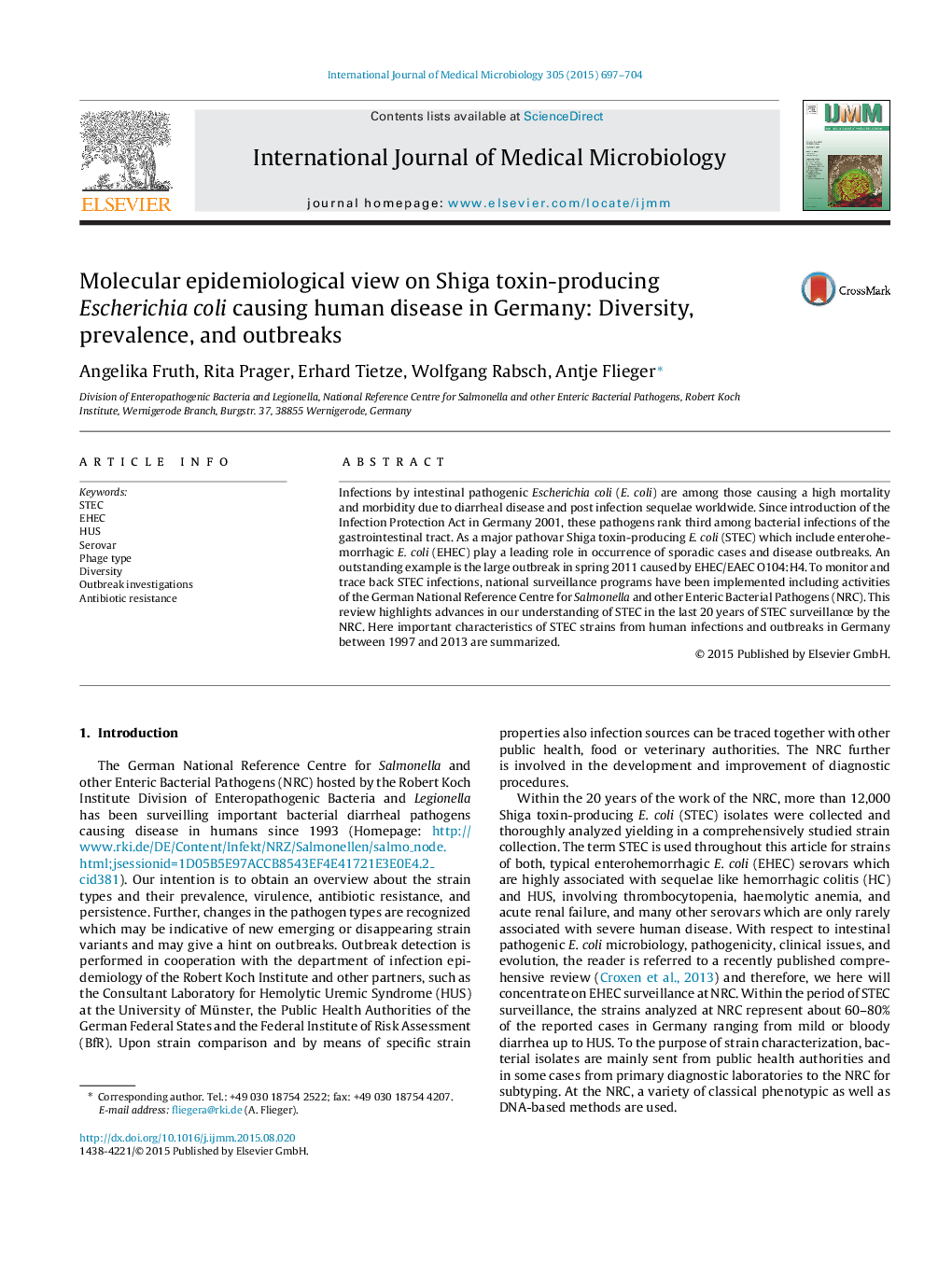| کد مقاله | کد نشریه | سال انتشار | مقاله انگلیسی | نسخه تمام متن |
|---|---|---|---|---|
| 2054795 | 1543685 | 2015 | 8 صفحه PDF | دانلود رایگان |
Infections by intestinal pathogenic Escherichia coli (E. coli) are among those causing a high mortality and morbidity due to diarrheal disease and post infection sequelae worldwide. Since introduction of the Infection Protection Act in Germany 2001, these pathogens rank third among bacterial infections of the gastrointestinal tract. As a major pathovar Shiga toxin-producing E. coli (STEC) which include enterohemorrhagic E. coli (EHEC) play a leading role in occurrence of sporadic cases and disease outbreaks. An outstanding example is the large outbreak in spring 2011 caused by EHEC/EAEC O104:H4. To monitor and trace back STEC infections, national surveillance programs have been implemented including activities of the German National Reference Centre for Salmonella and other Enteric Bacterial Pathogens (NRC). This review highlights advances in our understanding of STEC in the last 20 years of STEC surveillance by the NRC. Here important characteristics of STEC strains from human infections and outbreaks in Germany between 1997 and 2013 are summarized.
Journal: International Journal of Medical Microbiology - Volume 305, Issue 7, October 2015, Pages 697–704
